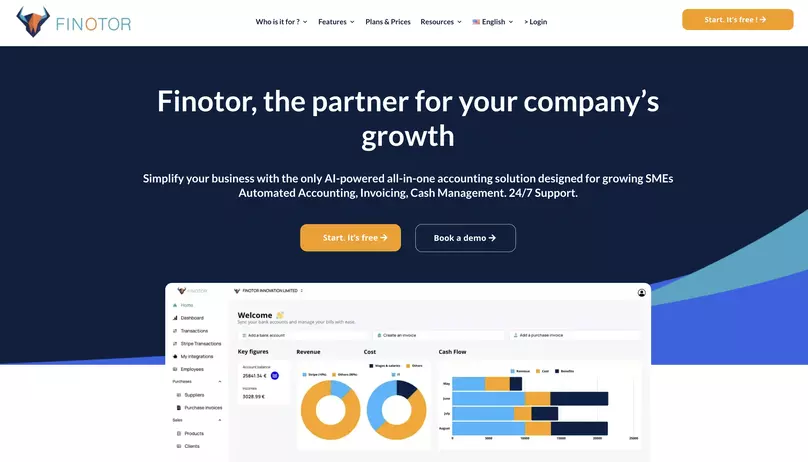Contents
- 1 Fund Accounting in Nonprofits: An Overview
- 2 Understanding the Basics What Sets Fund Accounting Apart
- 3 Advantages of Fund Accounting for Financial Managers
- 4 Case Studies Real-Life Examples of Fund Accounting Success
- 5
- 6
- 7 Implementing Fund Accounting in Your Nonprofit
- 8 Conclusion: The Future of Fund Accounting in Nonprofits
- 9 Frequently Asked Questions (FAQs)
Financial management is a critical aspect for any organization, especially for nonprofits who rely heavily on donations and grants. In the past, organizations used to follow commercial accounting methods which were not designed to meet the specific needs of nonprofits. However, with the rise in the number of nonprofit organizations worldwide, there has been an increase in the adoption of fund accounting specifically tailored for nonprofits.
Fund accounting is an accounting system that tracks individual funds or accounts within a larger entity. This allows nonprofits to track and report on financial activities for each fund separately while maintaining overall organizational finances. Understanding fund accounting basics is crucial for effectively managing these diverse financial activities. In this article, we will explore the advantages of fund accounting.
Why Fund Accounting is a Game-Changer for Nonprofits
In the realm of nonprofits, financial transparency and efficiency are paramount. For financial managers, mastering fund accounting can make a significant difference in how these organizations operate and fulfill their missions. This blog post will explore the advantages of fund accounting in nonprofits, offering practical insights and real-life examples to guide you. Whether you’re just getting started or looking to refine your approach, read on to discover why fund accounting is important and how it can transform your nonprofit’s financial management, including the preparation and presentation of accurate financial statements.
Fund Accounting in Nonprofits: An Overview
Fund accounting is the backbone of financial management in the nonprofit sector. Unlike traditional accounting methods used by for-profit businesses, fund accounting focuses on accountability rather than profitability. It allows nonprofit organizations to track multiple sources of funds and ensure that money is used according to donor restrictions and regulatory requirements. For financial managers in nonprofit organizations, understanding fund accounting is not just beneficial; it’s essential for maintaining transparency and trust.
Understanding the Basics What Sets Fund Accounting Apart
To grasp the advantages of fund accounting, it’s crucial first to understand what sets it apart from traditional accounting methods.
Accountability Over Profitability
Nonprofits, unlike for-profit businesses, are driven by their mission rather than the pursuit of profit. Fund accounting is essential in this sector as it emphasizes accountability, ensuring that every dollar is used according to its intended purpose. This accounting method segregates funds into different categories or “funds” based on their specific restrictions and intended uses, such as grants, donations, and operational expenses.
By providing a transparent and detailed view of how donations and grants are allocated and spent, fund accounting builds and maintains donor trust. Donors want to see that their contributions are making a real impact and are being used effectively to further the organization’s mission. Transparency in fund allocation is also vital for complying with legal and regulatory requirements, which often mandate strict tracking and reporting of how funds are used.
Moreover, fund accounting helps nonprofit organizations plan and manage their finances more effectively. It enables them to monitor the availability of resources, ensuring that they can sustain their operations and continue delivering services without financial shortfalls. This focus on accountability and transparency not only supports the organization’s integrity but also enhances its reputation, encouraging more donations and support from the community.
Ultimately, the priority of accountability over profitability in fund accounting ensures that nonprofits remain focused on their mission, using their resources efficiently and ethically to achieve their goals and make a meaningful difference in the communities they serve.

Segregation of Funds
FFund accounting enables the precise segregation of various funding sources within a nonprofit organization. This segregation is crucial for maintaining clarity and accountability, ultimately contributing to the organization’s financial health. For example, a nonprofit may receive multiple streams of income, such as donations from individual contributors, grants from government or private foundations, and revenue generated from fundraising events. Each of these funding sources often comes with its own set of restrictions and designated purposes. Additionally, fund accounting allows for the accurate preparation of financial statements, ensuring that each fund’s financial activities are clearly reported and easily understood.
Donations may be earmarked for specific programs or projects, grants typically have stringent guidelines on their use, and revenue from fundraising events might be allocated to general operating expenses or particular initiatives. Fund accounting allows for the meticulous separation and tracking of these funds, ensuring that each dollar is used exactly as intended by the donor or grantor.
This system not only facilitates compliance with donor stipulations and regulatory requirements but also enhances transparency and accountability. By keeping funds distinct, nonprofits can produce detailed financial reports that show exactly how each source of income has been utilized. This transparency is vital for maintaining the trust of donors, grantors, and other stakeholders, who need assurance that their contributions are being managed responsibly and effectively.
Additionally, the segregation of funds aids in internal financial management. Nonprofit leaders can easily monitor the status of each fund, making informed decisions about resource allocation, program development, and future fundraising efforts. It also helps prevent the unintentional misuse of funds, thereby protecting the organization from potential legal and financial repercussions.
In essence, fund accounting’s ability to segregate funds ensures that a nonprofit can uphold its commitments to donors, government agencies, and regulatory bodies while strategically managing its resources to fulfill its mission.
Detailed Financial Reporting
Fund accounting provides detailed financial reports that give stakeholders a clear picture of the organization’s financial health. These reports often include balance sheets, income statements, and cash flow statements for each fund, offering a comprehensive view of how resources are being utilized.
Advantages of Fund Accounting for Financial Managers
Fund accounting offers numerous advantages for financial managers in nonprofits. Let’s explore some of the key benefits.
Clear Financial Reporting
One of the most significant advantages of fund accounting is the clarity it brings to financial reporting by breaking down reports by individual funds, ensuring fund segregation, compliance with fund restrictions, accountability, transparency, precise budgeting and planning, detailed reporting and analysis, and demonstrating good stewardship of resources, all of which can be further enhanced by using professional services in a nonprofit organization.
- Transparency:
Clear financial reporting enhances transparency, which is crucial for maintaining donor trust and meeting regulatory requirements. Financial managers can easily generate reports that show how funds are being spent, providing stakeholders with detailed insights into the organization’s financial activities.
- Ease of Audit:
Detailed financial reports also simplify the auditing process. Auditors can easily verify that funds are being used according to donor restrictions and regulatory requirements, reducing the risk of financial discrepancies and ensuring compliance.
Compliance with Donor and Regulatory Requirements
Nonprofits often face stringent donor and regulatory requirements, and fund accounting principles, such as fund segregation, compliance with fund restrictions, accountability, transparency, precise budgeting and planning, detailed reporting and analysis, and demonstrating good stewardship of resources, make it easier to comply with these requirements by providing a clear and detailed view of how financial transactions are being used.
Donor Restrictions:
Many donations come with specific restrictions on how the funds can be used. Fund accounting allows financial managers to track these restrictions and ensure that funds are used appropriately. This not only helps maintain donor trust but also ensures that the organization meets its legal obligations and achieves the proper allocation of resources, including compliance with requirements set by government agencies. Nonprofit fund accounting is essential for managing these various funding streams effectively and transparently.
Regulatory Compliance:
Nonprofits must comply with various regulations, including IRS requirements and state laws. Fund accounting provides the detailed financial records needed to meet these compliance requirements, reducing the risk of legal issues and financial penalties. Additionally, it allows for the proper management of restricted funds, ensuring that these funds are used solely for their designated purposes as stipulated by donors.
Tracking and Managing Multiple Funding Sources
Nonprofits often receive funding from multiple sources, including donations, grants, and revenue from fundraising events. To effectively manage these diverse funding streams, it is crucial to implement fund accounting, which makes it easier to track and manage these different funding sources.
- Segregation of Funds:
Fund accounting allows for the segregation of funds from different sources. This ensures that funds are used according to their intended purpose and helps prevent the misuse of resources. Financial managers can easily track how much money is available in each fund and how it is being used, providing clear and accurate financial data for reporting and decision-making.
- Efficient Resource Allocation:
With fund accounting, financial managers can allocate resources more efficiently. By tracking how funds are being used, they can identify areas where resources are being underutilized and make adjustments as needed. This helps ensure that the organization is making the most of its available resources and directing appropriate funds to where they are needed most. Additionally, fund accounting enables the preparation of detailed financial statements, which provide a comprehensive view of the organization’s financial health and resource allocation.
Case Studies Real-Life Examples of Fund Accounting Success
To illustrate the effectiveness of fund accounting, let’s look at some real-life examples of nonprofits that have successfully implemented this system.
Organization A
Organization A is a small nonprofit that provides educational programs for underprivileged children. Before implementing fund accounting, the organization struggled to track its various funding sources and comply with donor restrictions. With the help of fund accounting software, Organization A was able to segregate its funds, track how donations were being used, and generate detailed financial reports. This improved transparency and accountability, leading to increased donor trust and support.
Organization B
Organization B is a medium-sized nonprofit that focuses on environmental conservation. The organization received funding from various sources, including government grants, corporate donations, and fundraising events. By implementing fund accounting, Organization B was able to track its different funding sources and ensure compliance with donor and regulatory requirements. This helped the organization secure additional funding and expand its programs.
Organization C
Organization C is a large nonprofit that provides healthcare services to low-income communities. The organization faced complex regulatory requirements and needed a way to track its various funding sources. Fund accounting allowed Organization C to generate detailed financial reports, ensuring compliance with regulatory requirements and improving transparency. This helped the organization attract more donors and increase its impact.
Implementing Fund Accounting in Your Nonprofit
If you’re considering implementing fund accounting in your nonprofit, here are some steps to get you started:
Choosing the Right Accounting System
The initial step in implementing fund accounting in a nonprofit organization is selecting the appropriate accounting system. Given the unique needs of nonprofits, it’s essential to choose a system tailored to fund accounting. There are numerous software options available, each offering different features and capabilities. When evaluating these systems, nonprofit enterprises should consider key factors such as ease of use, scalability, and integration with other existing systems within the organization. In the nonprofit world, selecting the right accounting system is crucial for maintaining financial transparency and efficiency. Additionally, having a system where fund accounting for nonprofits is important ensures that financial managers can accurately track and report on the use of both restricted and unrestricted funds, adhering to donor restrictions and regulatory requirements. Use fund accounting to enhance your organization’s ability to manage diverse funding sources and meet compliance standards effectively.
Research and Compare:
Start by conducting thorough research on various fund accounting software options. Identify the specific features and functionalities each system offers, focusing on those that align with your nonprofit organization’s needs. Key features to look for include robust fund segregation capabilities, comprehensive financial reporting tools, and reliable compliance tracking. Additionally, ensure the software can accurately manage and report on net assets, financial resources, and financial statements, providing a clear picture of the organization’s financial health, which is especially important for tax-exempt organizations. Incorporating nonprofit accounting principles will help ensure the software meets the unique requirements of nonprofit financial management. Fund accounting is important because it ensures transparency and accountability in tracking and managing the multiple funding sources critical to nonprofit operations.
Ease of Use: Choose a system that is user-friendly and requires minimal training for your staff. A straightforward interface and clear navigation can save time and reduce the likelihood of errors, especially when reconciling with bank statements and managing restricted funds. Fund accounting makes it easier to ensure that all financial transactions are accurately tracked and that funds are used in accordance with donor restrictions and organizational policies.
Scalability: Consider the future growth of your organization. Select a system that can scale with your nonprofit, accommodating an increasing volume of transactions and expanding operational needs without compromising performance, while adhering to generally accepted accounting principles.
Integration: Ensure that the accounting system can seamlessly integrate with other systems you use, such as donor management software, CRM tools, and payroll systems. This integration can streamline processes, reduce duplication of effort, and provide a more cohesive view of your organization’s finances. Additionally, fund accounting enables organizations to maintain detailed and accurate records of each funding source, including restricted funds, enhancing overall financial management and accountability.
Evaluate Vendor Support:
Assess the level of customer support and training provided by the software vendors. Reliable support can be crucial during the implementation phase and for ongoing troubleshooting and updates. Look for vendors that offer comprehensive training resources, including tutorials, webinars, and user manuals, to ensure your team can make informed decisions about using the system effectively. Additionally, the software should provide clear guidance on managing and reporting fund balances and separate funds, which is essential for accurate financial oversight and a clear understanding of the organization’s financial status. Use fund accounting to ensure that your organization maintains detailed and transparent records, facilitating better decision-making and compliance with regulatory and donor requirements.
Consider Budget:
While selecting a fund accounting system, consider your organization’s budget. Look for software that provides the best value for money without compromising on essential features, including the ability to manage restricted funds and different funds. Some vendors offer nonprofit discounts or tiered pricing based on the size of the organization.
Get Feedback:
Seek feedback from other nonprofits that have used the systems you are considering. User reviews and testimonials can provide valuable insights into the pros and cons of each option. Additionally, consider reaching out to your network or industry associations for recommendations.
By thoroughly researching, comparing features, and considering the specific needs of your organization, and adhering to fund accounting standards, you can choose a fund accounting system that supports your financial management goals, enhances transparency, and ensures compliance with donor and regulatory requirements.
Seek Recommendations:
Seek recommendations from other nonprofits or financial professionals. They can provide valuable insights into the pros and cons of different systems and help you make an informed decision.
Training Staff and Board Members
Once you’ve chosen a fund accounting system, it’s important to train your staff and board members on how to use it effectively. This will ensure that everyone understands the system and can use it to its full potential, including reconciling transactions and verifying data with bank statements. Unlike for-profit accounting, which focuses on profitability, fund accounting in nonprofits emphasizes accountability and proper allocation of resources, including the management of endowment and fiduciary funds.
Comprehensive Training:
Provide comprehensive training for your staff and board members. This should include hands-on training sessions, user manuals, and ongoing support as needed.
- Continuous Learning:
Encourage continuous learning and improvement. Keep your staff and board members updated on any changes to the system and provide opportunities for additional training and professional development.
Best Practices for Long-Term Success
Implementing fund accounting is not a one-time task. To ensure long-term success, follow these best practices.
- Regular Reviews:
Conduct regular reviews of your fund accounting system and processes. This will help you identify any issues or areas for improvement and ensure that your system remains effective.
- Stakeholder Engagement:
Engage stakeholders, including donors, board members, and staff, in your fund accounting processes. This will help build trust and ensure that everyone is aligned with your organization’s financial goals.
- Continuous Improvement:
Continuously improve your fund accounting system and processes. Stay updated on best practices and industry trends, and be proactive in making changes as needed.
Conclusion: The Future of Fund Accounting in Nonprofits
The future of fund accounting in nonprofits is promising, driven by technological advancements and a growing emphasis on transparency and accountability. Technology will continue to play a crucial role in the evolution of fund accounting, making it easier for nonprofits to manage their finances, track funding sources, and generate detailed financial reports. Advanced fund accounting software and tools will streamline these processes, enhancing overall efficiency and allowing for better tracking of administrative costs. Fund accounting makes it possible to provide a clear and precise view of how funds are allocated and used, ensuring compliance with donor and regulatory requirements.
Continuous learning and improvement are essential for the success of fund accounting in nonprofits. Financial managers must stay updated on best practices, industry trends, and regulatory requirements to ensure their fund accounting processes remain effective. This commitment to ongoing education will enable nonprofits to adapt to changes, manage the general fund efficiently, and maintain robust financial management practices.
Fund accounting is a powerful tool for nonprofits, offering numerous advantages for financial managers. By providing clear financial reporting, ensuring compliance with donor and regulatory requirements, and tracking multiple funding sources, including the appropriate fund for each specific purpose, fund accounting can transform the way nonprofits manage their finances. If you’re a financial manager in a nonprofit, consider implementing fund accounting for nonprofits to enhance transparency, accountability, and efficiency in your organization. For further assistance, reach out to Finotor for expert guidance and support.
Frequently Asked Questions (FAQs)
What is fund accounting?
Fund accounting is a system of accounting used by nonprofits to track and manage funds from various sources. It segregates funds based on their intended purpose, ensuring that donations and grants are used according to donor and regulatory requirements.
Why is fund accounting important for nonprofits?
Fund accounting helps nonprofits maintain transparency and accountability. By tracking how funds are used and generating detailed financial reports, nonprofits can ensure that they comply with donor restrictions and regulatory requirements, increasing donor trust and support.
How do I choose the right fund accounting software?
When choosing fund accounting software, consider factors such as ease of use, scalability, and integration with other systems. Research and compare different options, seek recommendations from other nonprofits or financial professionals, and evaluate the features that are most important for your organization.
How can I train my staff and board members on fund accounting?
Provide comprehensive training sessions for your staff and board members, including hands-on training, user manuals, and ongoing support. Encourage continuous learning and offer additional training and professional development opportunities as needed.
What are the best practices for maintaining an effective fund accounting system?
To maintain an effective fund accounting system, conduct regular reviews of your system and processes, engage stakeholders in the fund accounting process, and continuously improve your system by staying updated on best practices and industry trends.









